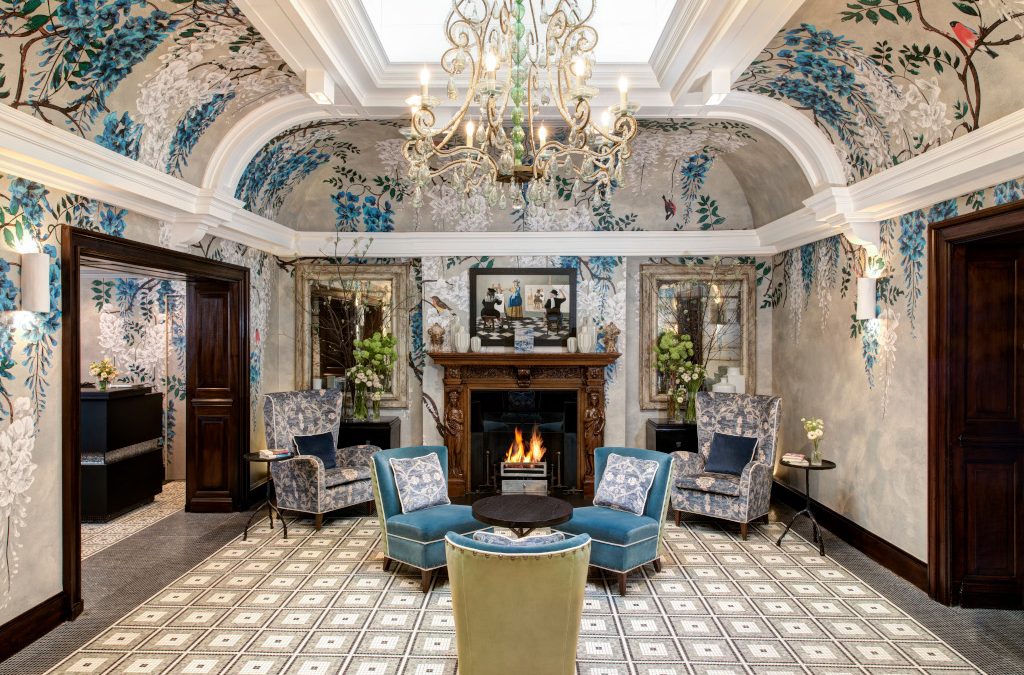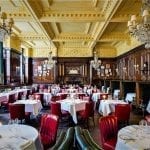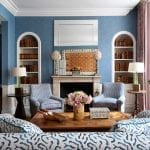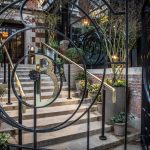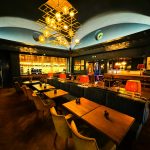Roger Hermiston and Eileen Wise pay a visit to the UK capital to stay at Brown’s hotel, and pop into a Late Constable exhibition at the Royal Academy.
Emperors, kings and queens, presidents, prime ministers and leading lights in the world of science and literature have all beat a path to Brown’s hotel Mayfair. But who would have guessed that the originators of this august establishment back in 1837 – reputedly the oldest hotel in London – were two ‘downstairs’ individuals who could have leaped out of the script of a Sunday night episode of Downton Abbey?
Mr and Mrs Brown
Queen Victoria was just on the throne, and a handsome Georgian property at 23 Dover Street had come on to the market. The prospective buyers (apologies to those few who haven’t watched the popular drama) were the Mr and Mrs Bates of their day, James Brown, a ‘gentleman’s gentleman’, and his wife Sarah, a lady’s maid – to none other than Lord Byron’s estranged wife.
Between them (and there is a strong suggestion that Lady Byron’s largesse helped considerably) they cobbled together the cash to purchase No 23. A year later they bought No 22 Dover Street, and six years after that Nos 21 and 24. With their backgrounds in service James and Sarah were ideally placed to provide hospitality and accommodation, just as the advent of the railway was bringing thousands more travellers to London. The legend of Brown’s was born.
A History of Brown’s Hotel
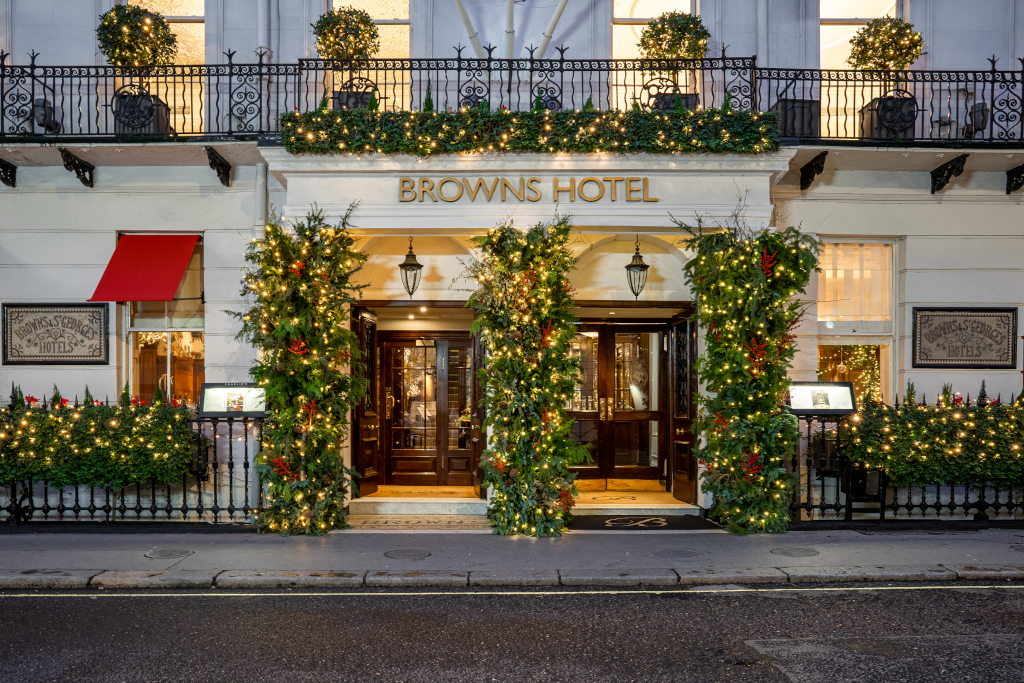

Little is known about this ambitious and clearly hardworking husband and wife. The hotel’s historian, David D Tennant, reckons the ‘formidable, strong-willed’ Sarah, an astute businesswoman, was the driving force. It is amusing to speculate what their lofty neighbours in Dover Street in the 1840s – including three baronets, the Bishop of Ely and the Russian Ambassador – might have made of this ‘upstart’ couple.
One hundred and eighty four years of expansion later and Brown’s now occupies properties on Albemarle Street and Dover Street. We’ll return to its colourful history along the way, but first reflect on its present, because this is a vibrant, progressive hotel which, although glorying in its rich past, always seems to have its sights fixed firmly on the future.
Eileen would be following in the footsteps of her grandfather Eugene, who – when he was able to take time off from his exacting job of developing a 600-acre farm in Cavendish, Suffolk – liked to check in regularly to Brown’s in the late 1940s and early 1950s for some quality rest and recuperation.
Christmas at Brown’s Hotel
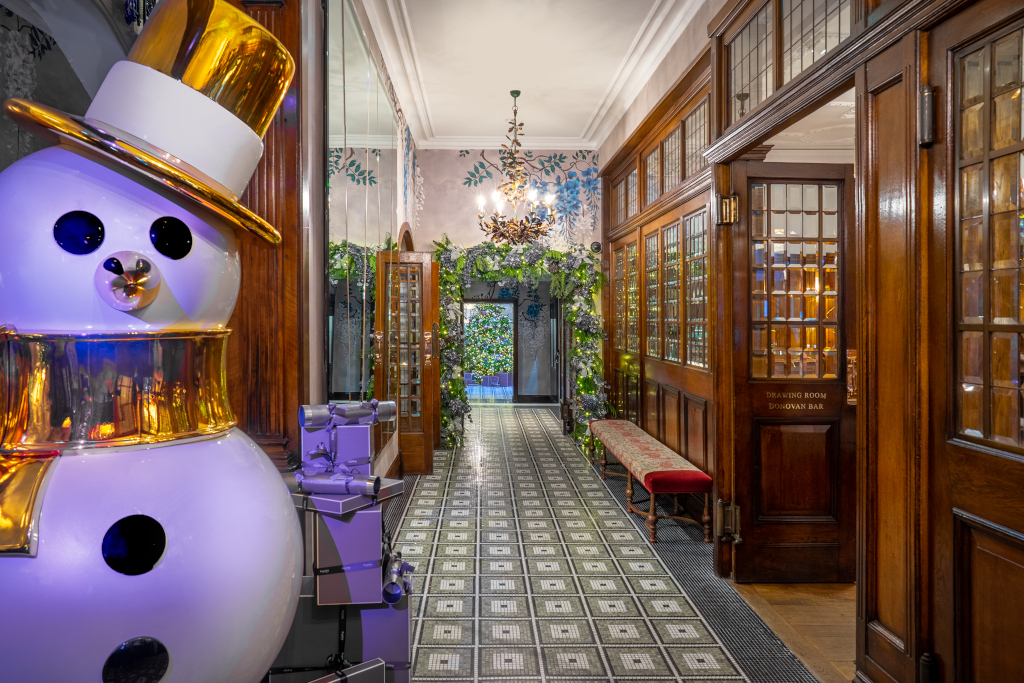

On the afternoon we arrived the staff were well underway with their Christmas decorations, with a sparkling tree in reception, a huge artificial snowman guarding the stairs to the first floor and much hustle and bustle as preparations were made for a Christmas Fair the following day. Plans were getting underway, too, for a few days’ time when a romantic, immersive dining experience would take place in the hotel’s Charlie’s Restaurant, with a performance of Tchaikovsky’s The Nutcracker suite amongst the tables.
The managing director Stuart Johnson was very much hands-on, and without exception his staff were friendly, interested and immensely helpful.
As much as the pretty tinsel and the baubles of the Christmas glitter, what caught our eye immediately was the gorgeous hand painted wallpaper covering the entire ground floor (and, as we would later discover, Charlie’s).
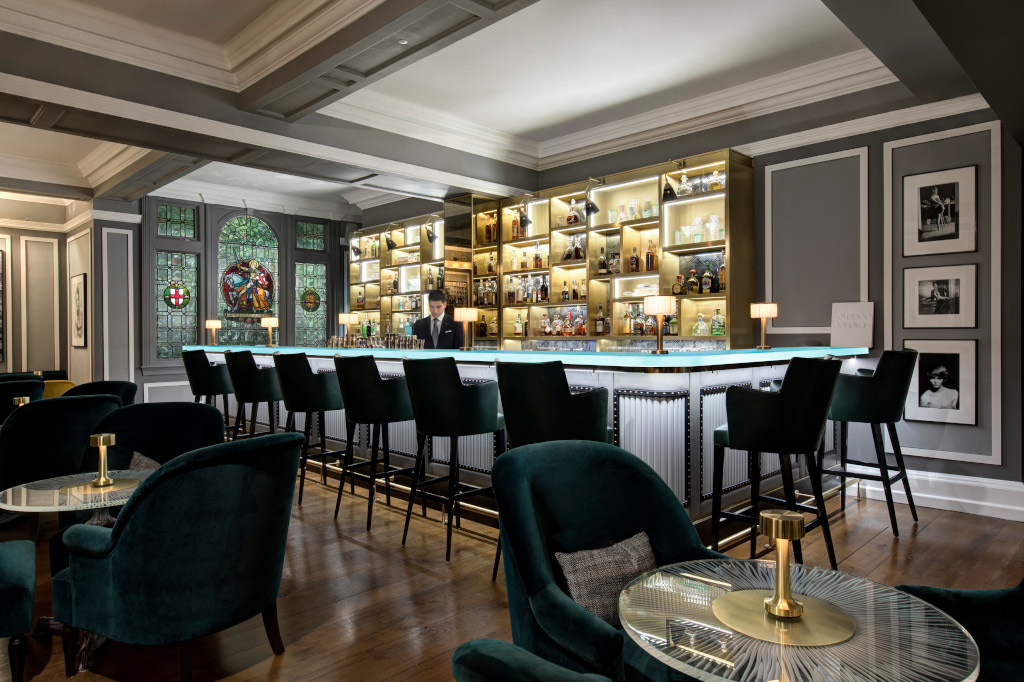

A Floral Eden
The hotel was acquired by Rocco Forte in 2003 and since then interior designer Olga Pollizzi – sister of Sir Rocco – has been putting her stamp on the place, augmenting the traditional dark woods of the Victorian and Edwardian eras with fresh, bright colours and strong patterns.
Two years ago she hired the Slade-trained artist Adam Ellis to design this wallpaper for Brown’s, to ‘convey the quintessential English garden in a fun and playful way’. So a floral Eden is what the guests see, with cascading beautiful oversized blue and green ‘whimsical’ wisteria hanging down, populated by bullfinches, blue tits and robins – and the occasional more exotic hummingbird.
As part of the 2019 revamp, the new front hall (see main photo) was transformed by an impressive elevated Belvedere glass roof which now floods the reception area with light. A 1930s chandelier from historic antiques dealer John Bly added a final stylish flourish.
A Suite at Brown’s Hotel
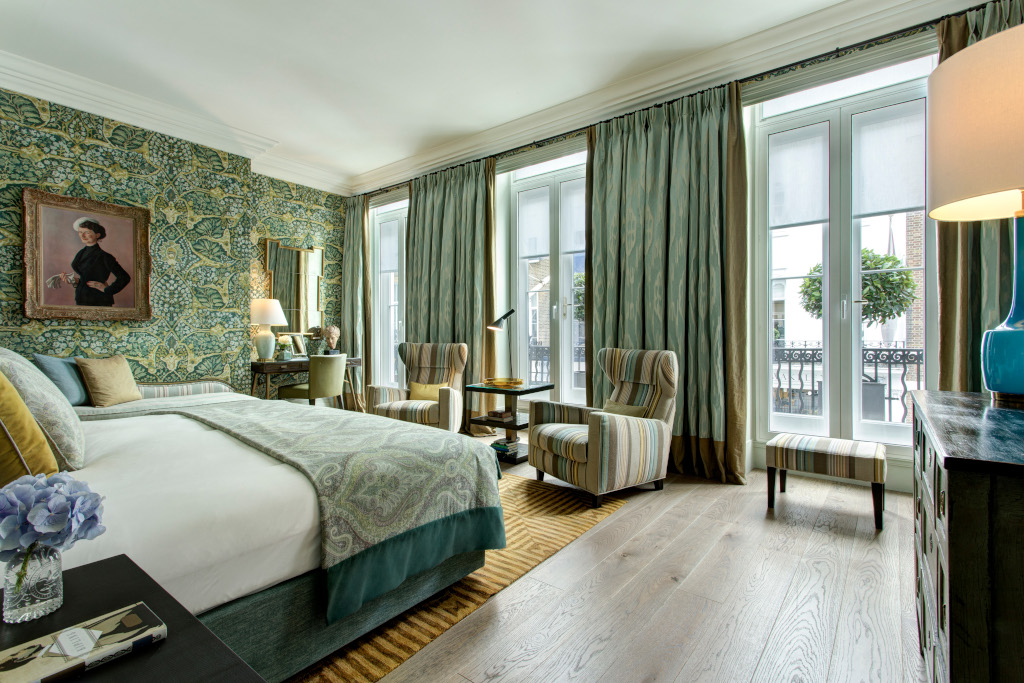

Brown’s has 115 rooms and suites – some of the most luxurious of the latter named after illustrious guests, like Rudyard Kipling (who wrote the Jungle Book during one of his many stays) and the Hellenic (in homage to King George II of Helenes, exiled from Greece and the hotel’s longest royal resident (1924-35).
Our Junior Suite was on the first floor, just along the corridor from the Kipling (which, in another impish touch, has the sculpture of a monkey swinging from the wall next to its door). It featured a little dark wood with a long desk, but essentially it was a light, bright spacious room with a contemporary feel (including the artwork, two nudes, on the walls), together with a view out onto the tempting shops of Albemarle Street.
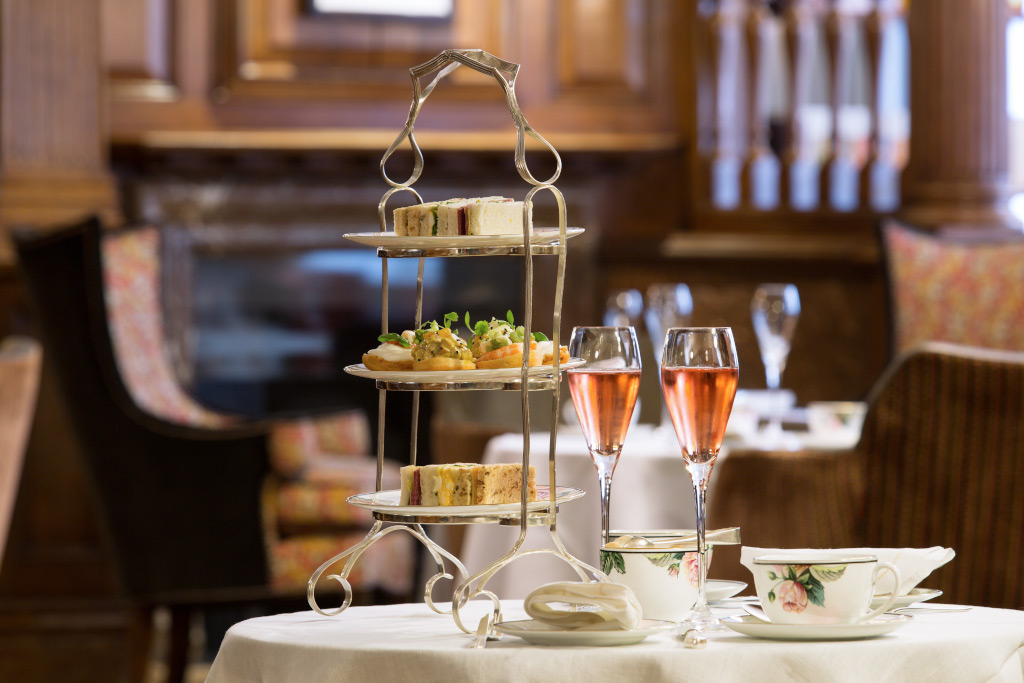

The king-sized bed was extremely comfortable, a walk-in wardrobe had generous space and the marbled bathroom – with huge bath and superb walk-in shower – was everything you would wish for. In keeping with the hotel’s literary associations, a bookcase in the corner contained some Everyman Classics, including – of course – Kipling’s ‘Kim’, Mary Shelley’s ‘Frankenstein’ and Anthony Trollope’s ‘Phineas Finn’.
Brown’s Hotel Afternoon Tea
The elegant Drawing Room at Brown’s has long been a favourite haunt of London’s great and good for Afternoon Tea. Queen Victoria is said to have spent time here, and you can imagine Agatha Christie – who stayed here and based her 1965 Miss Marple novel ‘At Bertram’s Hotel’ at Brown’s – taking a seat quietly in the corner, notebook in hand, sharply observing different characters come and go, picking one of them as a candidate for murder.
Dining at Charlie’s
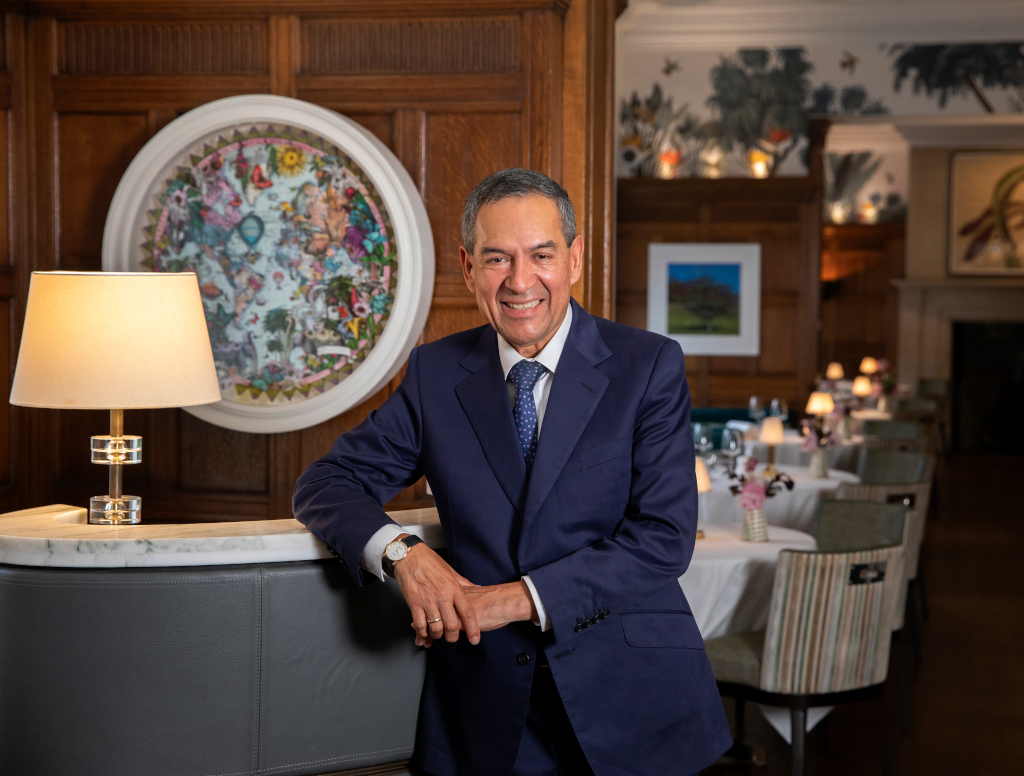

We choose not to indulge ourselves there this time but saved our appetite for dinner at Charlie’s. It was a special evening, not just because of the superb food (orchestrated by Michelin-starred Chef Director Adam Byatt), but because Eileen was able to meet up – after a long absence – with an old friend, a true icon of the London restaurant scene.
Bolivian-born Jesus Alorno arrived in the UK aged 19, intending merely to learn English and then return home to teach it. But he was quickly captivated by the restaurant world and elected to stay on, soon landing a plum job as head waiter at a brand new place, Le Caprice, in 1981.
The rest, as they say, is history. Le Caprice became a London institution – amongst others, Princess Diana had her favourite corner table – and Jesus established his reputation as the capital’s most charismatic maître d.
A visit to Le Caprice was not just for a meal, but for an event, as the charming, ebullient Jesus smoothed furrowed brows and whetted appetites. His presence, as much as the food and the atmosphere, attracted Eileen and many others back again and again.
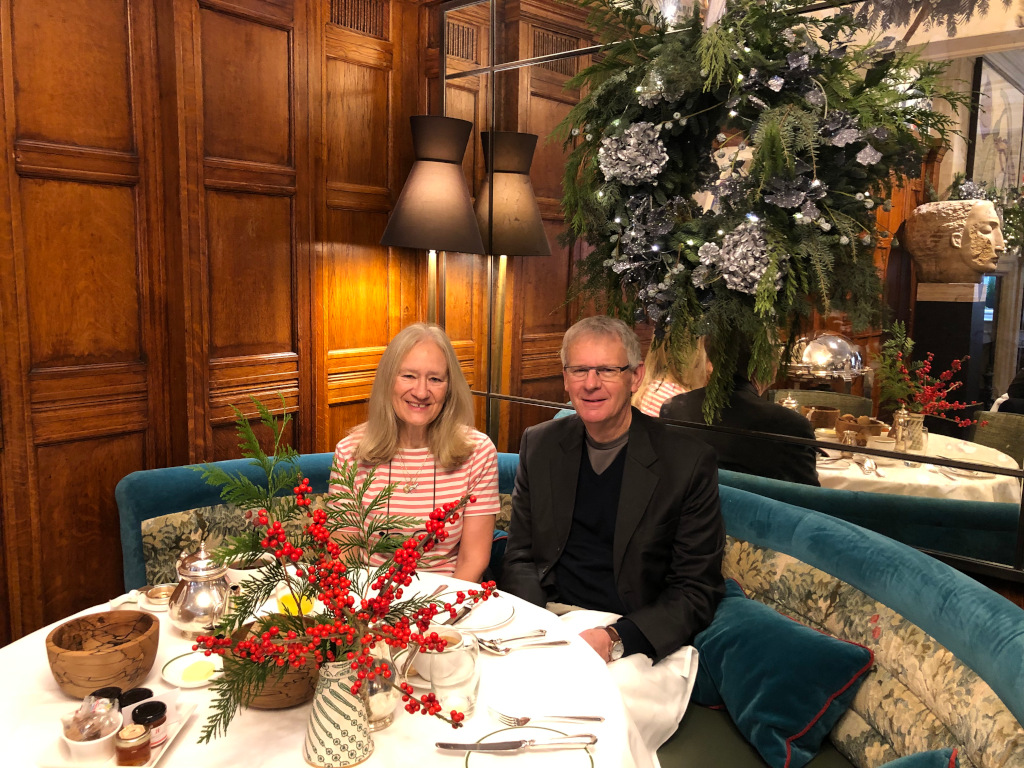

But all great partnerships come to an end, and Le Caprice and Jesus parted company in the summer when the restaurant closed its doors in St James’s after nearly 40 years. Sir Rocco Forte wasted little time in snapping up the maestro’s services, and Jesus is now firmly ensconced as Brown’s Director of Hospitality, overseeing the front of house.
From the evidence of our evening, Jesus’s enthusiasm, his passion for his calling remains undimmed, and his intention of making Charlie’s the destination restaurant in the West End surely has every chance of success.
Historical Events at Brown’s Hotel
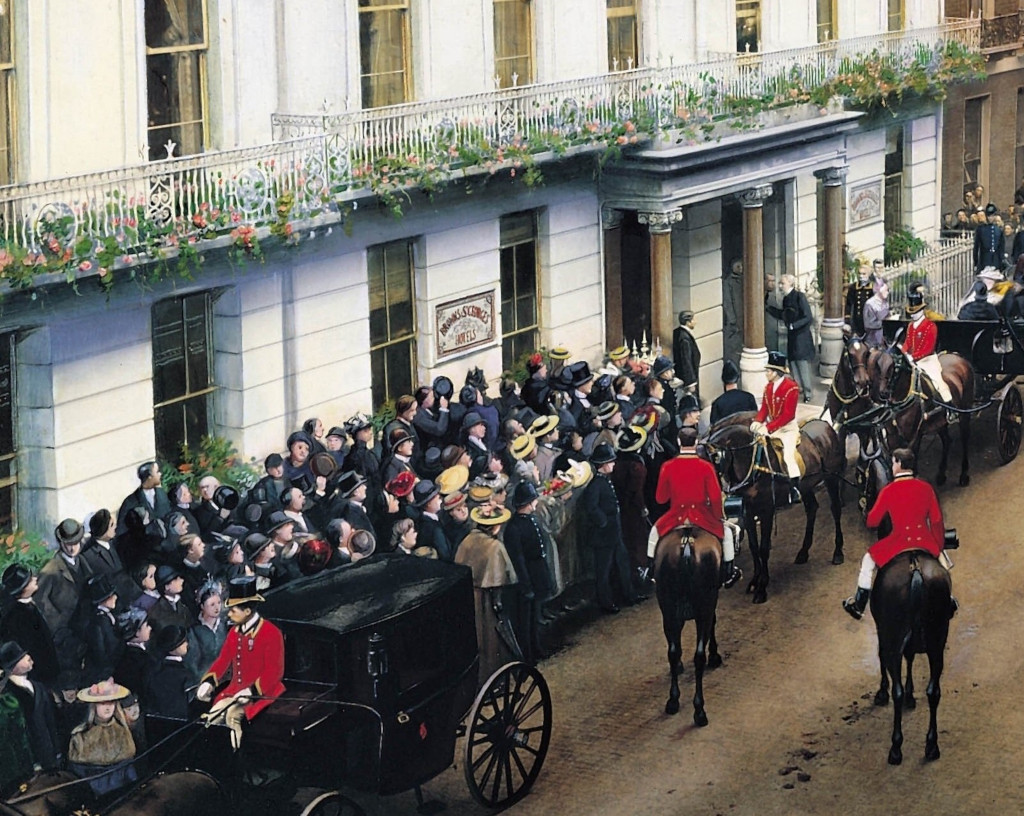

A few of Brown’s past luminaries have already been highlighted, but it’s worth mentioning a couple of other stories from the hotel’s rich historical tapestry. It’s widely accepted – although actual documentary proof doesn’t exist – that Alexander Graham Bell made the first ever telephone call in London here in 1876, all the way through to the home of the then owner James John Ford five miles away in Ravenscourt Park.
The Roosevelt family had strong connections with Brown’s – Theodore (President No 26) stayed here before his marriage to Edit Kermit Carow, and a copy of their marriage certificate still hangs in the hotel today. His fourth cousin Franklin (President No 32) and his wife Eleanor visited Brown’s on their honeymoon; Eleanor noted in her memoir, ‘We were given the Royal Suite at Brown’s, with a sitting room so large that I could not find anything that I put down!’
Amongst the many writers who found inspiration here was Stephen King, who settled down at Rudyard Kipling’s old desk in 1980 to start to pen his terrifying psychological thriller ‘Misery’.
Late Constable
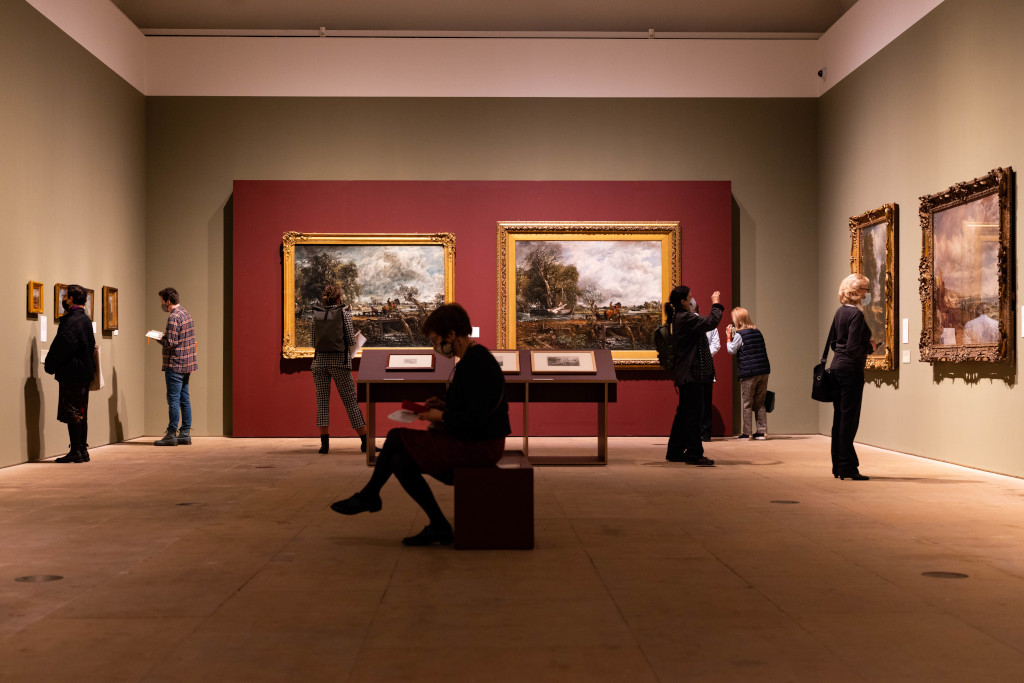

Photo: © David Parry/ Royal Academy of Arts
We like to combine a visit to the capital by taking in an exhibition or a show, and conveniently this time there was one of the latter at the Royal Academy – with one of our very own Suffolk greats.
In 1837, the very year Brown’s opened, John Constable died unexpectedly (of heart failure) on the night of 31 March at his home in Charlotte Street, Fitzrovia. He was 60 and had been working hard right up to his death – teaching in the Life Class and Painting School of the Royal Academy, and working in oils on his painting Arundel Mill and Castle.
The exhibition, entitled Late Constable, features his work in the last twelve years of his life from 1825 to 1837; it runs until 13 February. It was during this period, in 1829, that Constable had been finally, belatedly inducted into the Royal Academy – astonishingly late, from our perspective, given the stunning landscapes, such as The Hay Wain and Stratford Mill (the so-called River Stour ‘six-footers’) that he had already produced.
It is clear from this magnificent exhibition that the great painter had not lost his touch – in fact he was diversifying, not just in subject matter (although still primarily landscapes) but in medium, as he turned his attention to watercolour with an enthusiasm he had not shown since the early 1800s.
Suffolk Landscapes and Beyond
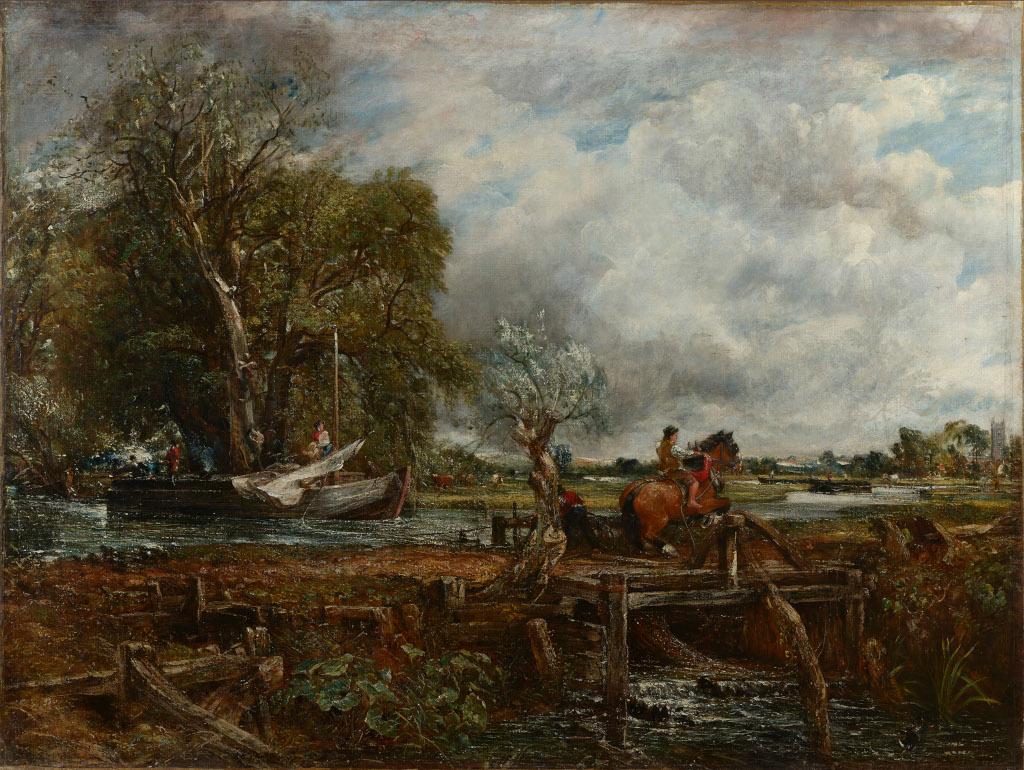

Photo © Royal Academy of Arts, London; photographer: Prudence Cuming Associates
People forget what a superb drawer of animals Constable was. The highlight of this collection has to be another awesome six-footer, The Leaping Horse’ (1925), a dramatic episode on Float Bridge, near Dedham, depicting a rider urging his barge horse to jump over a barrier on the towpath.
Rather than his renowned River Stour canal scenes, Constable instead began to paint lanes, dells and panoramic vistas evoked by his childhood wanderings in and around East Bergholt. One such is the delightful The Cornfield (1926), where on Fen Lane a shepherd boy slakes his thirst in a pool of water while the sheep, marshalled by a collie dog, wait patiently.
But there is so much else to admire, away from his Suffolk landscapes – for example The Opening of Waterloo Bridge (1932) commemorating Wellington’s great victory and probably (at seven foot) his largest work, and the watercolour Old Sarum (1834), depicting the famous stone fort against a huge backdrop of swirling, threatening clouds.
We returned to Brown’s to pick up our bags and make our way back to Constable country. We had felt very much at home in our short stay.
Brown’s Hotel London
Albemarle Street, London, W1S 4BP
T: +44 20 7493 6020
W: https://www.roccofortehotels.com
